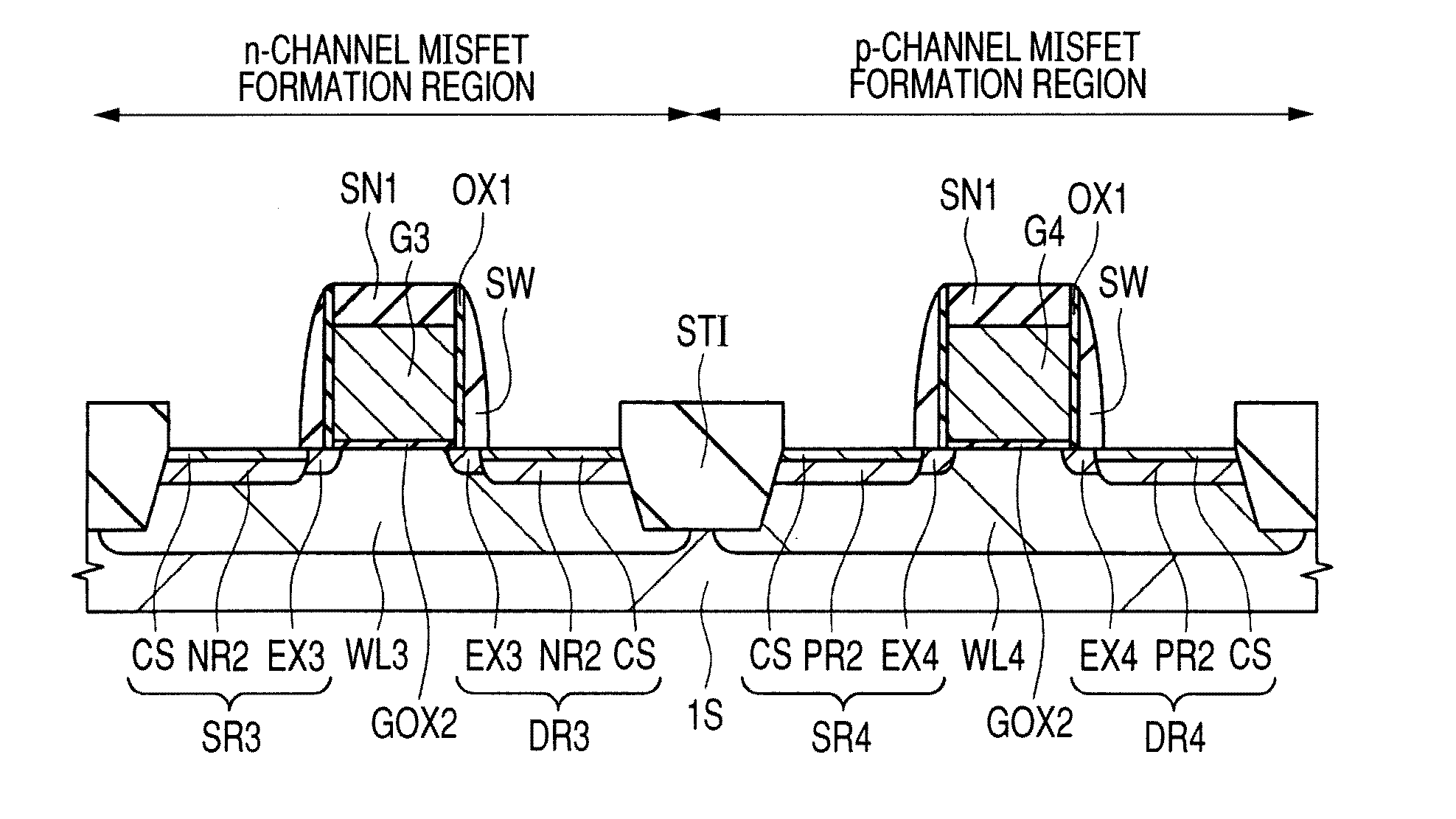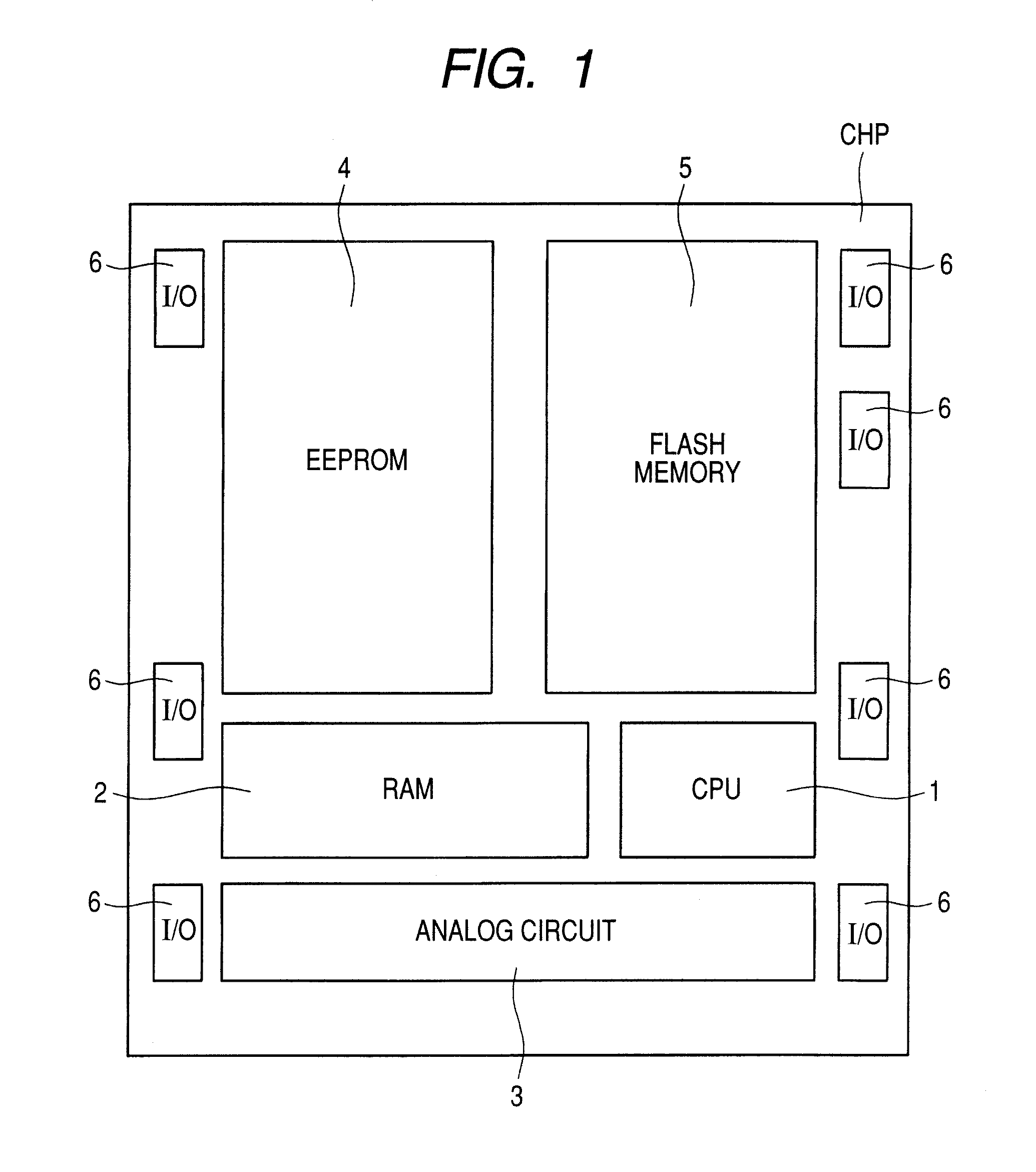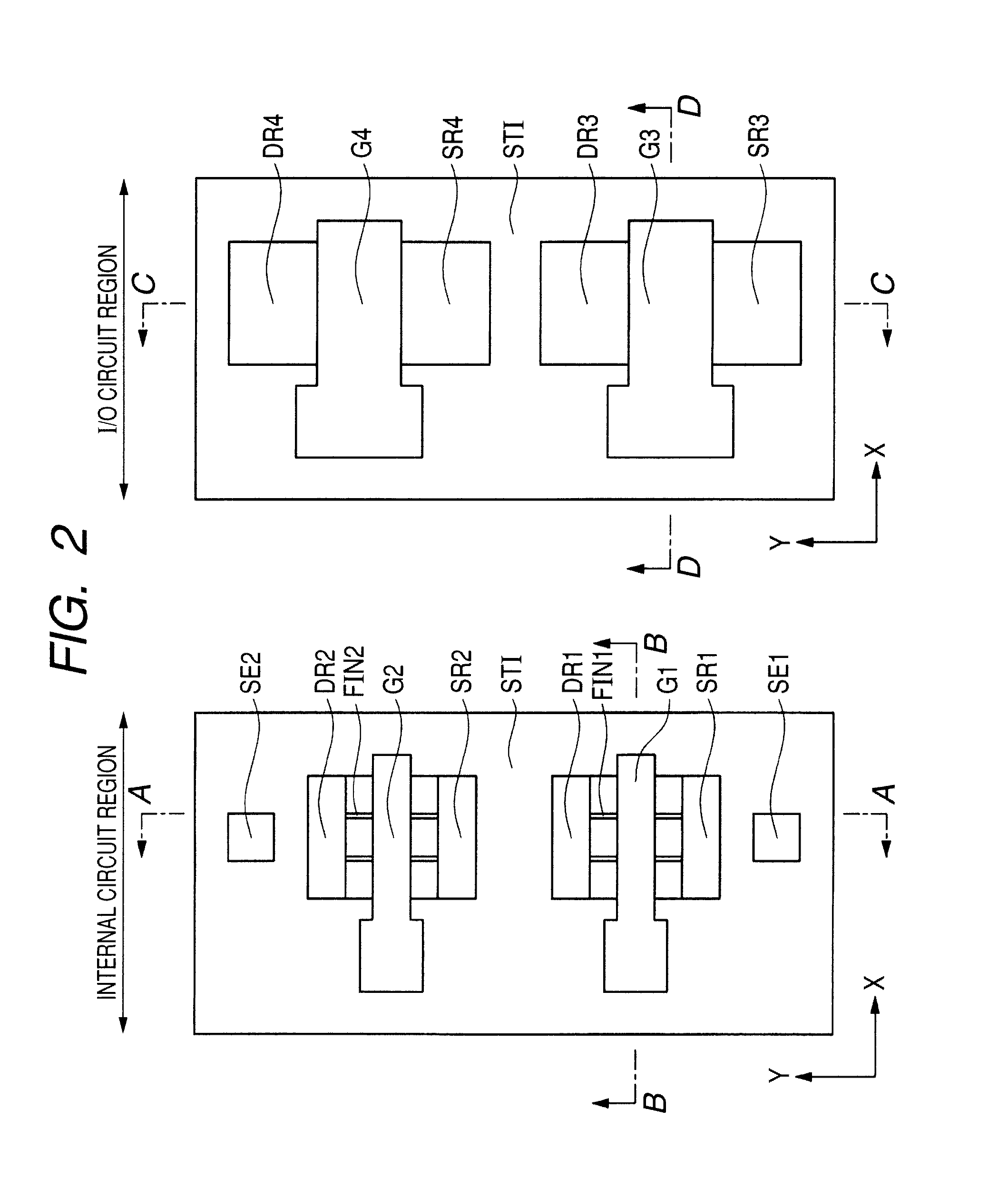Semiconductor device and manufacturing method thereof
a technology of semiconductor devices and manufacturing methods, applied in the direction of semiconductor devices, basic electric elements, electrical appliances, etc., can solve the problems of increasing the generation of devices, affecting the efficiency of the device, so as to achieve the effect of increasing the length of the gate electrode and achieving the effect of high current driving power
- Summary
- Abstract
- Description
- Claims
- Application Information
AI Technical Summary
Benefits of technology
Problems solved by technology
Method used
Image
Examples
embodiment 1
[0063]A semiconductor device according to Embodiment 1 will next be described referring to some drawings. First, the layout structure of a semiconductor chip having a system including a microcomputer will be described. FIG. 1 is a diagram illustrating the layout structure of a semiconductor chip CHP according to Embodiment 1. In FIG. 1, the semiconductor chip CHP has a CPU (central processing unit) 1, a RAM (random access memory) 2, an analog circuit 3, an EEPROM (electrically erasable programmable read only memory) 4, a flash memory 5, and an I / O (input / output) circuit 6.
[0064]The CPU (circuit) 1 is also called a central processing unit and is the heart of a computer or the like. The CPU1 fetches and decodes instructions from a memory device and based on them, it controls various operations or carries out a variety of arithmetic operations.
[0065]The RAM (circuit) 2 is a read / write memory. Stored information can be read randomly or written newly. It is also called a random access me...
embodiment 2
[0163]In Embodiment 1, as illustrated in FIG. 28, an n-type impurity such as phosphorus (P) or arsenic (As) is introduced into the source region SR1 and the drain region DR1 (including a portion of the fin FIN1 not covered with the gate electrode G1) formed in the n-channel FINFET formation region by using photolithography and oblique ion implantation. In short, ion implantation is employed as a method for introducing an impurity into the fin FIN1 not covered with the gate electrode G1. In this case, it is desired to lower the resistance of the fin FIN1 from the standpoint of improving the characteristics of the FINFET. It is necessary to control the dosage of an impurity and an implantation energy in order to lower the resistance of the fin FIN1.
[0164]FIG. 34 is a graph showing the relationship between the sheet resistance of the fin FIN1 and the dosage of an impurity introduced into the fin FIN1. In FIG. 34, the dosage of an impurity is plotted along the abscissa and the sheet res...
PUM
 Login to View More
Login to View More Abstract
Description
Claims
Application Information
 Login to View More
Login to View More - R&D
- Intellectual Property
- Life Sciences
- Materials
- Tech Scout
- Unparalleled Data Quality
- Higher Quality Content
- 60% Fewer Hallucinations
Browse by: Latest US Patents, China's latest patents, Technical Efficacy Thesaurus, Application Domain, Technology Topic, Popular Technical Reports.
© 2025 PatSnap. All rights reserved.Legal|Privacy policy|Modern Slavery Act Transparency Statement|Sitemap|About US| Contact US: help@patsnap.com



